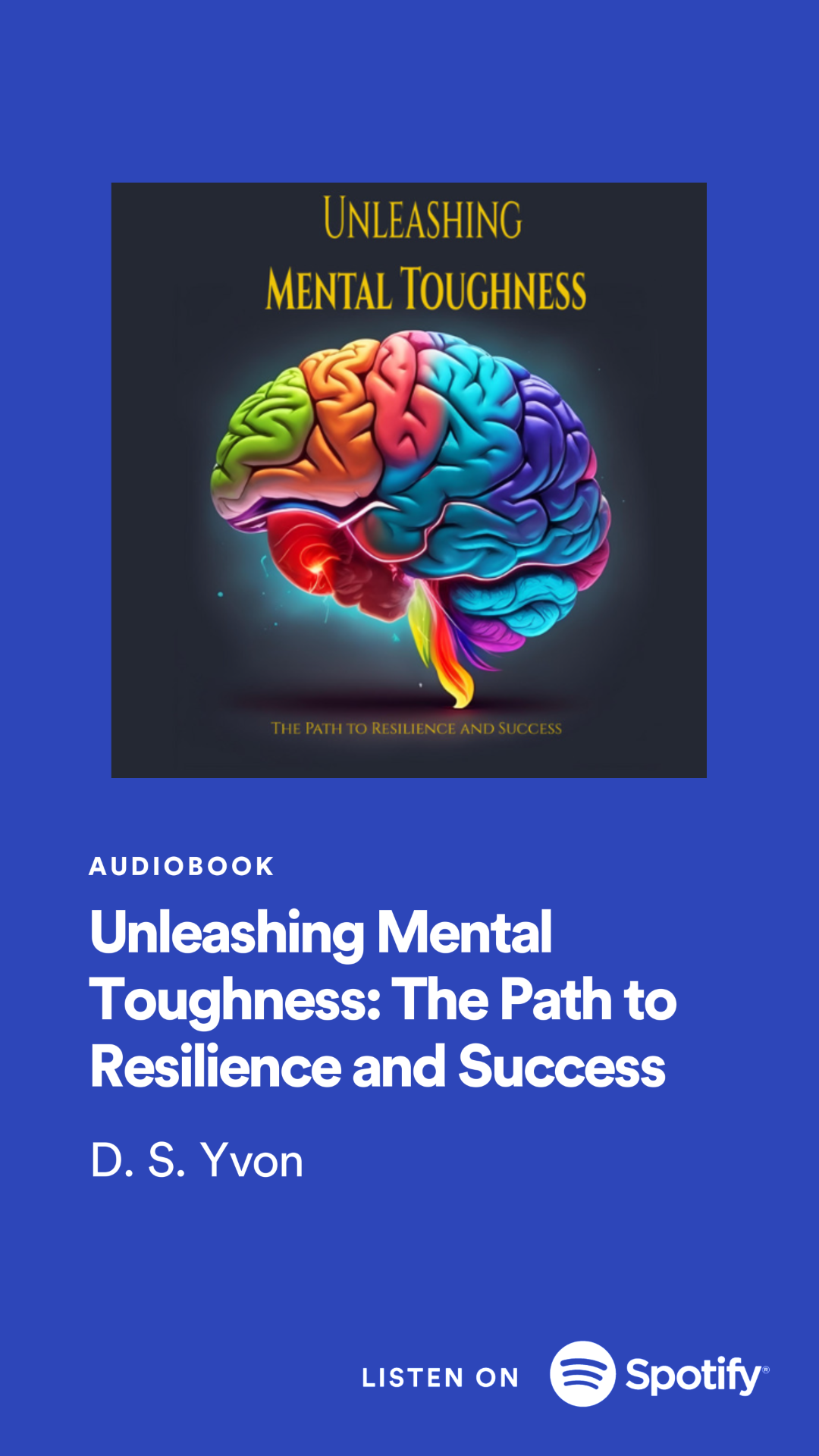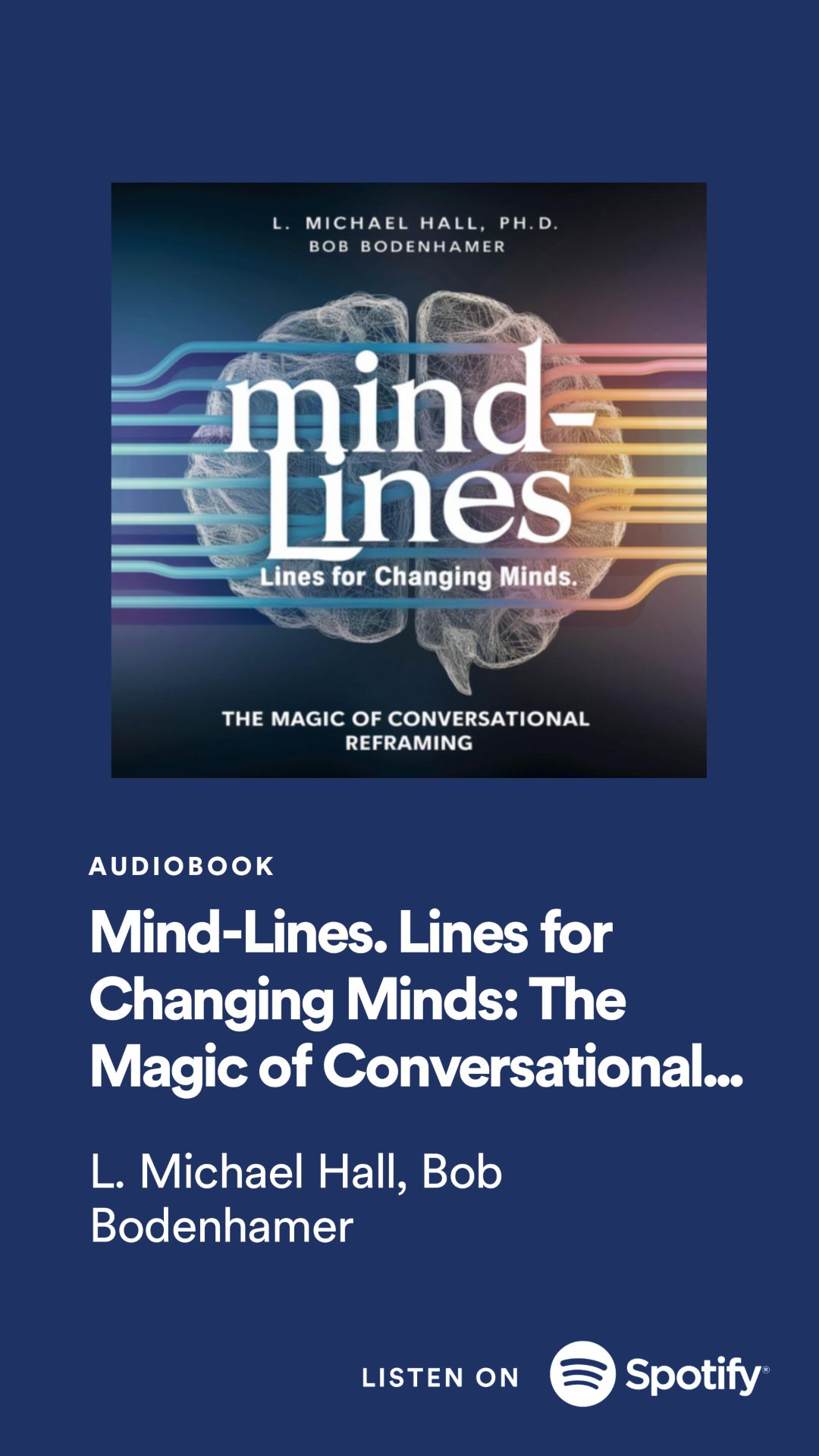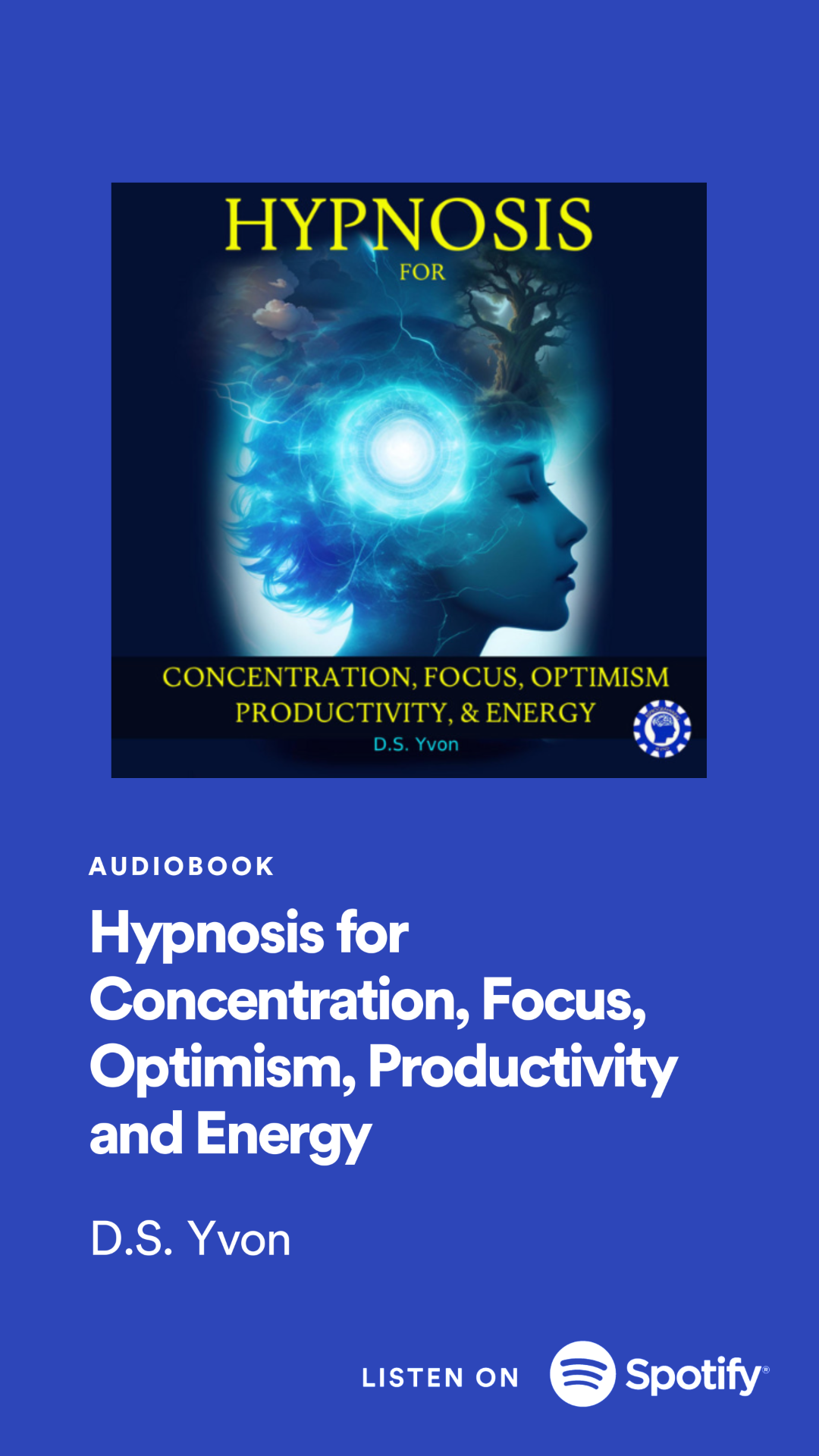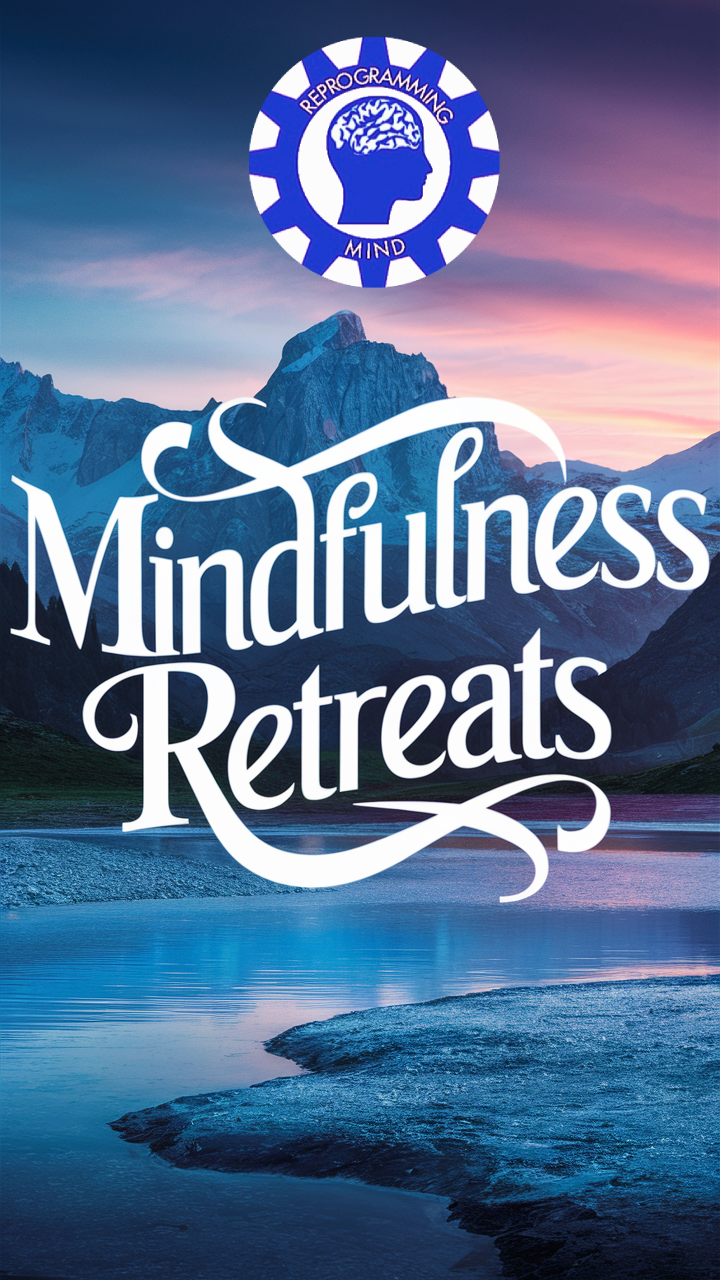


Everything to Know Before Buying an Oura Ring
The Oura Ring is a sophisticated health and fitness tracker designed to provide comprehensive insights into various biometric metrics but it has a few bells and whistles to consider before buying an Oura ring. Launched in 2015, it has gained popularity among fitness enthusiasts and celebrities due to its sleek, discreet design resembling a traditional ring rather than a bulky smartwatch.
Key Features
How does the Oura Ring compare to other health trackers?
The Oura Ring offers a unique approach to health tracking compared to other devices like smartwatches. Here's how it compares:
Design and Comfort
- Discreet Form Factor: The Oura Ring is designed as a sleek metal ring, making it far less conspicuous than traditional wrist-worn trackers
- Lightweight and Comfortable: Its titanium construction makes it lightweight and comfortable for continuous wear, even during sleep
Health Tracking Capabilities
- Comprehensive Metrics: The Oura Ring tracks various health metrics including heart rate, blood oxygen levels, skin temperature, and daily steps
- Sleep Tracking: It excels in sleep analysis, providing detailed insights into sleep patterns and trends
- Unique Scoring System: Oura provides daily Readiness, Sleep, and Activity scores, offering an easy-to-understand overview of overall health
Limitations
- No Real-Time Display: Unlike smartwatches, the Oura Ring lacks a display for real-time fitness statistics or notifications
- Limited Active Workout Tracking: It's less suitable for active individuals who need instant feedback during workouts
Battery Life and Durability
- Extended Battery Life: The Oura Ring offers up to 7 days of battery life, surpassing many smartwatches
- Water-Resistant: It can be worn during various activities, including swimming
Data Interpretation and App Experience
- User-Friendly App: The Oura app presents data in an easily interpretable format, even for those without a technical background
- Subscription Model: Advanced insights require a monthly subscription, which is an additional cost compared to some other trackers
Compatibility
- Cross-Platform: Unlike some smartwatches (e.g., Apple Watch), the Oura Ring is compatible with both iOS and Android devices
While the Oura Ring offers unique advantages in discreet, continuous health monitoring, it may not fully replace smartwatches for those who need features like real-time workout stats, GPS tracking, or smartwatch notifications. Its strength lies in providing a holistic view of health and wellness, particularly excelling in sleep tracking and overall readiness assessment.
How does Oura Ring's Sleep Tracking Compare to other Health Trackers?
Unique Features
Comfort and Practicality
Limitations
Comparison to Specific Devices

Top Audiobook Recommendations of Elon Musk.
Elon Musk replied to a tweet that had asked for audiobook recommendations.
The Story of Civilization by Durant
Iliad (Penguin Edition)
The Road to Serfdom by Hayek
American Caesar by Manchester
Masters of Doom by Kushner
The Wages of Destruction by Tooze
The Storm of Steel by Junger
The Guns of August by Tuchman
The Gallic Wars by Caesar
Twelve Against…— Elon Musk (@elonmusk) July 1, 2024
Here is the list:
The Story of Civilization by Durant
Iliad (Penguin Edition)
The Road to Serfdom by Hayek
American Caesar by Manchester
Masters of Doom by Kushner
The Wages of Destruction by Tooze
The Storm of Steel by Junger
The Guns of August by Tuchman
The Gallic Wars by Caesar
Twelve Against the Gods by Bolitho
Genghis Khan by Weatherford
What are these books about?
They're mostly about war and are on average 15 hours long. Here is a review for each one.
Story of Civilization: A Monumental Journey Through Human History
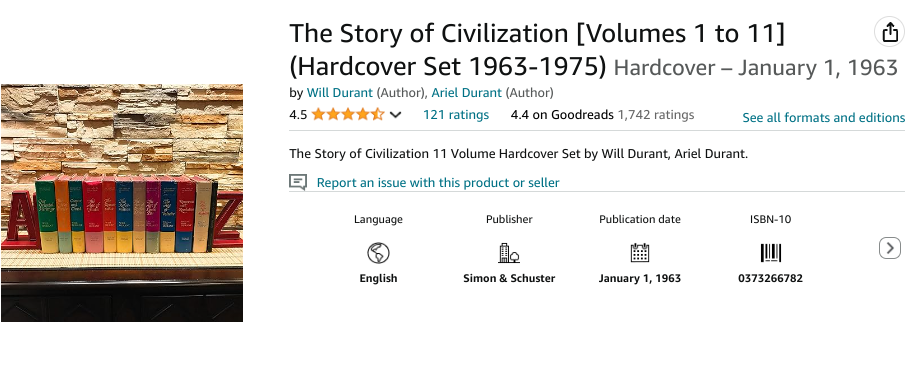 The Durants' writing style is engaging and accessible, bringing history to life through vivid storytelling and insightful analysis. They have a remarkable ability to synthesize vast amounts of information into coherent narratives, connecting historical events, cultural developments, and intellectual trends across time and geography. Their prose flows smoothly, punctuated by moments of wit and memorable turns of phrase that make even complex topics digestible for the general reader.
The Durants' writing style is engaging and accessible, bringing history to life through vivid storytelling and insightful analysis. They have a remarkable ability to synthesize vast amounts of information into coherent narratives, connecting historical events, cultural developments, and intellectual trends across time and geography. Their prose flows smoothly, punctuated by moments of wit and memorable turns of phrase that make even complex topics digestible for the general reader.
Download Free Audiobooks at Amazon
The Iliad
 The audiobook version of Homer's "The Iliad" offers a powerful and immersive experience of this ancient Greek epic poem. Listening to the story brings it to life in a way that closely resembles how it would have been originally shared - through oral recitation by skilled bards.
The audiobook version of Homer's "The Iliad" offers a powerful and immersive experience of this ancient Greek epic poem. Listening to the story brings it to life in a way that closely resembles how it would have been originally shared - through oral recitation by skilled bards.The Road to Serfdom
'American Caesar'
Masters of Doom: How Two Guys Created an Empire and Transformed Pop Culture
The Wages of Destruction by Tooze
Storm of Steel

The Guns of August
 Barbara W. Tuchman's "The Guns of August," narrated by John Lee and Wanda McCaddon, is an exceptional audiobook that brings to life the intricate events leading up to and during the first month of World War I. This Pulitzer Prize-winning work is renowned for its detailed and dramatic portrayal of the early days of the conflict, capturing the tension, miscalculations, and tragic decisions that set the stage for one of the most devastating wars in history.
Barbara W. Tuchman's "The Guns of August," narrated by John Lee and Wanda McCaddon, is an exceptional audiobook that brings to life the intricate events leading up to and during the first month of World War I. This Pulitzer Prize-winning work is renowned for its detailed and dramatic portrayal of the early days of the conflict, capturing the tension, miscalculations, and tragic decisions that set the stage for one of the most devastating wars in history.
The Galiic War
 The audiobook version of "The Gallic Wars" by Julius Caesar offers listeners a compelling journey into one of the most significant military campaigns of ancient history. This firsthand account, narrated by Caesar himself, provides a unique and invaluable perspective on the Roman conquest of Gaul from 58 to 51 BCE.
The audiobook version of "The Gallic Wars" by Julius Caesar offers listeners a compelling journey into one of the most significant military campaigns of ancient history. This firsthand account, narrated by Caesar himself, provides a unique and invaluable perspective on the Roman conquest of Gaul from 58 to 51 BCE.Twelve Against the Gods
The 1929 collection of short and exquisitely written biographical essays on the lives of such famed adventurers as Alexander the Great, Casanova, Christopher Columbus, Napoleon, and Isadora Duncan.
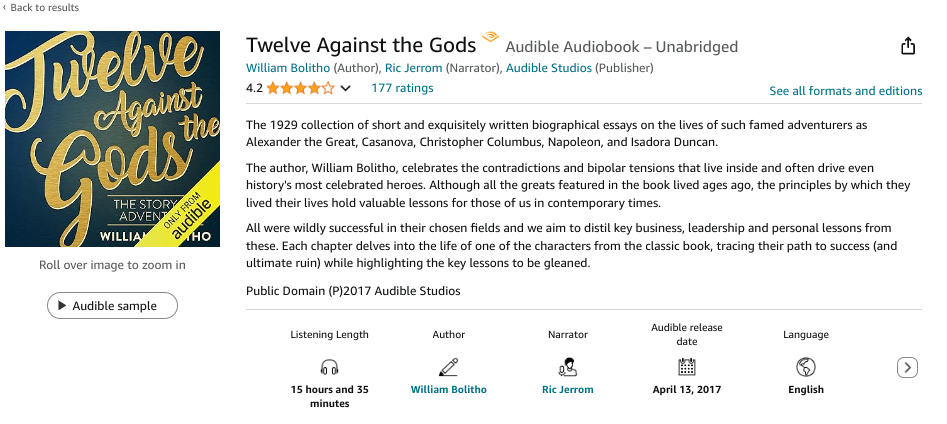 "Twelve Against the Gods" by William Bolitho, narrated by Ric Jerom, offers listeners an engaging exploration of 12 historical figures who defied convention and shaped history through their adventurous lives.
"Twelve Against the Gods" by William Bolitho, narrated by Ric Jerom, offers listeners an engaging exploration of 12 historical figures who defied convention and shaped history through their adventurous lives.
Genghis Khan and the Making of the Modern World
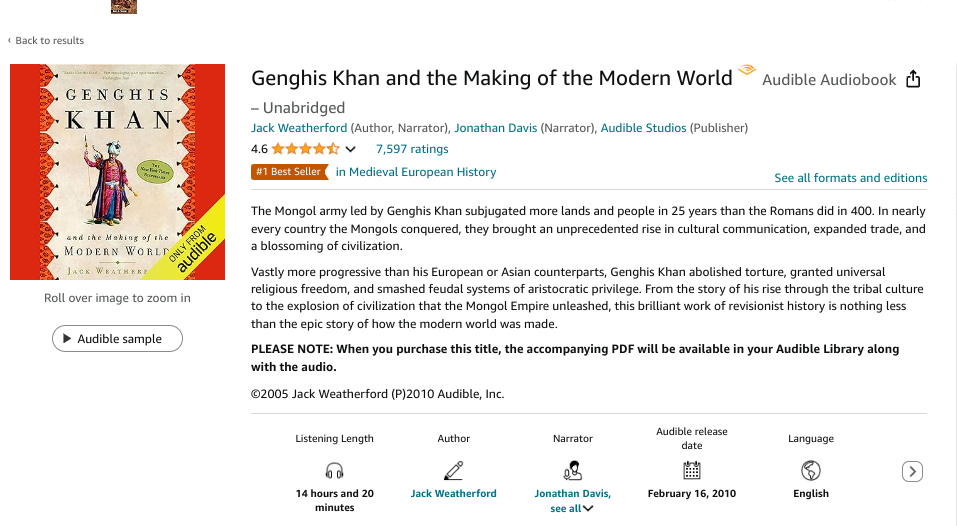 The audiobook "Genghis Khan and the Making of the Modern World" by Jack Weatherford, narrated by Jonathan Davis, is a captivating and enlightening exploration of Genghis Khan's life and the far-reaching impact of the Mongol Empire on world history.
The audiobook "Genghis Khan and the Making of the Modern World" by Jack Weatherford, narrated by Jonathan Davis, is a captivating and enlightening exploration of Genghis Khan's life and the far-reaching impact of the Mongol Empire on world history.Where Is Society Going with The Top 15 Growth Performers of 2024?
As we analyze these stocks and their sectors, we can infer several key observations about where society may be heading in the near future. These stocks span a wide range of industries, from technology and artificial intelligence to electric vehicles and healthcare,...
Everything to Know Before Buying an Oura Ring
The Oura Ring is a sophisticated health and fitness tracker designed to provide comprehensive insights into various biometric metrics but it has a few bells and whistles to consider before buying an Oura ring. Launched in 2015, it has gained popularity among fitness...
Top Audiobook Recommendations of Elon Musk.
Elon Musk replied to a tweet that had asked for audiobook recommendations. The Story of Civilization by DurantIliad (Penguin Edition)The Road to Serfdom by HayekAmerican Caesar by ManchesterMasters of Doom by KushnerThe Wages of Destruction by ToozeThe Storm of Steel...
How to Learn Better: A Review of “The Science of Rapid Skill Acquisition”
Learning is a lifelong journey, but mastering new skills doesn't have to be a slow, arduous process. In his insightful book, "The Science of Rapid Skill Acquisition," by Peter Hollins is a comprehensive guide that explores advanced methods for learning, retaining, and...
Achieving Healthy Hair: Preventing Hair Loss and Promoting Hair Regrowth
Preventing Hair Loss:
Stress Management: Practice stress-reduction techniques like meditation, yoga, or deep breathing exercises, as chronic stress can contribute to hair loss.
Scalp Care: Keep your scalp clean and free from excessive oil, dirt, and product buildup to maintain a healthy environment for hair growth.
Avoid Hairstyling Damage: Minimize hairstyles that pull tightly on the hair, such as tight ponytails or buns, as they can cause traction alopecia.
Protect from Environmental Damage: Shield your hair from harsh environmental elements like sunlight, pollution, and chlorine by wearing protective headgear or using appropriate hair products.
How PTSD Was Cured Four Times in 5 Hours
This case study shows how a non-drug intervention can be successfully used to cure PTSD in a Vietnam veteran in under 5 hours. 'Carl, our pseudonymous client, met criteria for at least one Diagnostic and Statistical Manual of Mental Disorders (DSM IV) Criterion A...
The Evolutionary and Psychological Challenges of Stock Trading
Stock trading is a complex activity that challenges our cognitive abilities and emotional control. Despite the potential for significant financial gains, many individuals struggle to succeed in this arena. The reasons for these difficulties are deeply rooted in our...
Everything You Need to About Short Term Memory But Forgot to Ask
Short-term memory has several key characteristics and limitations, especially when it comes to interruptions: 1. Limited capacity: Short-term memory can typically hold only about 7 (+/- 2) items at a time. This limited capacity makes it vulnerable to disruption when...
Why so Many School Shootings? The Tragedy of School Shootings in America: A Look into the Deadliest Incidents and the Minds Behind Them
In the annals of American history, few events have left as deep and lasting a scar on the national psyche as school shootings. These tragic incidents have not only claimed countless innocent lives but have also fundamentally altered the way we view educational...
Ways to Impact Your Business with AI: Transforming Industries and Operations
If you are looking to impact your business with AI (Artificial Intelligence) now that it has emerged as a transformative force in the business world, revolutionizing workflows, methodologies, and entire industries, this post will give you some insights on how to...

How to Learn Better: A Review of “The Science of Rapid Skill Acquisition”
Learning is a lifelong journey, but mastering new skills doesn't have to be a slow, arduous process. In his insightful book, "The Science of Rapid Skill Acquisition," by Peter Hollins is a comprehensive guide that explores advanced methods for learning, retaining, and applying new skills efficiently. This book offers valuable insights into the psychology and biology of learning, providing readers with actionable strategies to accelerate their skill acquisition process.
Key Concepts
The Importance of Learning
Rapid Skill Acquisition
Learning Strategies
Understanding Learning Styles
"The Science of Rapid Skill Acquisition" by Peter Hollins is a comprehensive guide that explores advanced methods for learning, retaining, and applying new skills efficiently. This book offers valuable insights into the psychology and biology of learning, providing readers with actionable strategies to accelerate their skill acquisition process.
Key Concepts
The Importance of Learning
Hollins emphasizes the critical role of learning in personal and professional growth:
"Learning is the key to bettering your circumstances and becoming the person you want to be. Skills, information, and abilities will never come to you - it's up to you to seek them out, and this book shows you how to do so in the most effective and efficient manner."
This fundamental premise sets the tone for the entire book, highlighting the proactive approach required for successful skill acquisition.
The Four Stages of Learning
One of the core frameworks presented in the book is the four stages of learning:
1. Unconscious incompetence
2. Conscious incompetence
3. Conscious competence
4. Unconscious competence
Hollins explains how understanding these stages can help learners navigate the emotional ups and downs of the learning process:
"We have strong, positive emotions at the beginning, followed by an immediate drop."[5]
This drop occurs as learners transition from unconscious incompetence to conscious incompetence, realizing the extent of what they don't know. Recognizing this pattern can help learners persist through challenging phases of skill acquisition.
### Rapid Skill Acquisition
The book's central theme is encapsulated in this quote:
"Rapid skill acquisition is how you get ahead in life professionally and personally."[1]
Hollins argues that the ability to quickly learn and apply new skills is a crucial competitive advantage in today's fast-paced world. He provides a range of techniques and strategies to achieve this, focusing on efficiency and effectiveness.
## Learning Strategies
### Deconstructing Skills
One of the key strategies Hollins advocates is breaking down complex skills into smaller, manageable components:
"Deconstruct the skill into several sub skills to figure out the 20% that truly is the most important to learn in the skill first. (Equivalent to learning the most used words in the English language)"[3]
This approach, reminiscent of the Pareto Principle, allows learners to focus on the most impactful aspects of a skill, accelerating their progress.
### Understanding Learning Styles
Hollins emphasizes the importance of identifying and leveraging one's optimal learning style:
"Understanding Which Medium and Style You Learn Best"[5]
By recognizing whether they are visual, auditory, or kinesthetic learners, individuals can tailor their learning approaches for maximum effectiveness.
### Deliberate Practice
The book strongly advocates for the power of deliberate practice:
"The Art of Deliberate Practice"[5]
Hollins explains that merely repeating an action is not enough; practice must be focused, intentional, and designed to target specific areas of improvement.
Consistency Over Intensity
An interesting perspective offered in the book is the emphasis on regular, consistent practice rather than intense, sporadic efforts:
"Consistency and Frequency rather than Intensity"[5]
This approach aligns with modern understanding of how the brain forms and strengthens neural connections, suggesting that frequent, shorter practice sessions may be more effective than occasional marathon sessions.
Psychological and Biological Foundations
Hollins delves into the underlying psychology and biology of learning, providing readers with a scientific basis for the techniques he recommends:
"Learn to rapidly train your brain and develop muscle memory. Understand the underlying psychology and biology."[1]
This scientific approach lends credibility to the methods presented and helps readers understand why certain techniques are effective.
The Role of Expectations
An intriguing point raised in the book is the impact of expectations on learning outcomes:
"How your expectations matter more than your amount of talent."
This concept ties into the growth mindset theory, suggesting that believing in one's ability to improve can significantly impact learning success.
Practical Applications
The book is not just theoretical; it offers practical advice for applying the concepts in real-world situations:
"Applicable and actionable advice - not just theory and description. Work smarter, not harder."[1]
Hollins provides specific techniques for:
- Rapidly training the brain
- Developing muscle memory
- Strategically deconstructing and analyzing information and skills
- Utilizing the people and environment around you
- Practicing, pivoting, and correcting yourself
- Stacking skills to become a unique resource
These practical strategies make the book a valuable resource for anyone looking to improve their learning efficiency.
Critical Analysis
While "The Science of Rapid Skill Acquisition" offers a wealth of information and strategies, it's important to consider some critical perspectives:
Synthesis of Existing Knowledge
Some readers have noted that much of the information in the book is synthesized from other sources:
"Almost everything from this book is taken from other books, all of which I have read already, for example, he takes from Cal Newport a few concepts, then he takes a few concepts from The Talent Code and then more concepts from Flow and on and on."
While this compilation approach can be valuable for readers new to the topic, those already well-versed in learning science may find less novel information.
Depth vs. Breadth
The book's broad coverage of various learning techniques may come at the cost of in-depth exploration:
"If you wish to save a lot of time and get the side headings right or get the keywords rights, then this book might help, but if you wish to get a deeper understanding of learning, this book is only the beginner's manual or an introductory work."
This suggests that while the book is an excellent starting point, readers seeking more advanced or specialized knowledge may need to supplement with additional resources.
Writing Style
Some readers have commented on the book's writing style:
"Writing style is dull. Pretty much just a synthesis of content that is freely available from other sources."[3]
While this is a subjective assessment, it's worth noting that the book's strength lies more in its content and organization than in its prose.
Conclusion
"The Science of Rapid Skill Acquisition" by Peter Hollins offers a comprehensive overview of learning strategies, grounded in psychological and biological principles. Its strengths lie in its practical approach, clear organization of concepts, and the breadth of techniques presented.
The book is particularly valuable for:
1. Individuals new to the science of learning and skill acquisition
2. Those looking to improve their learning efficiency across various domains
3. Readers seeking a structured approach to skill development
However, readers already well-versed in learning science or seeking highly advanced techniques may find the book more of a refresher than a source of new information.
Overall, Hollins succeeds in providing a "definitive resource to get you where you want to be in terms of a new talent, skill, or ability." The book's emphasis on understanding the learning process, tailoring strategies to individual needs, and focusing on consistent, deliberate practice makes it a useful guide for anyone looking to accelerate their skill acquisition.
"Th e Science of Rapid Skill Acquisition" offers a toolkit for staying competitive and adaptable. While it may not revolutionize the field, it effectively synthesizes key concepts and presents them in an accessible, actionable format. For many readers, this book could be the catalyst for transforming their approach to learning and skill development.
e Science of Rapid Skill Acquisition" offers a toolkit for staying competitive and adaptable. While it may not revolutionize the field, it effectively synthesizes key concepts and presents them in an accessible, actionable format. For many readers, this book could be the catalyst for transforming their approach to learning and skill development.
"The Science of Rapid Skill Acquisition" is available on Amazon.
















